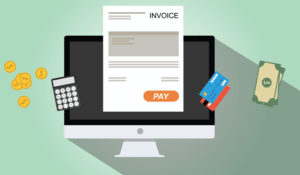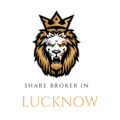
But if interest rates have changed substantially since debt issuance, the market value of debt could have deviated from adjusting entries book values materially. If I promise you $1,000 next year in exchange for money now, the higher the risk you perceive equates to a higher cost of capital for me. The decision depends on the risk you perceive of receiving the $1,000 cash flow next year. When you need to perform calculations or carry out financial analyses, it’s common for the data you need to be spread out over multiple spreadsheets, often in different formats.
What is a Business Payday Loan? – The Essential Guide

Understanding these variables can help businesses manage their financing more effectively and secure favorable terms. The WACC can also vary across different industries and countries, depending on the characteristics and risks of each industry and country. For example, some industries may have higher or lower levels of debt or equity, higher or lower costs of debt or equity, or higher or lower tax rates than others. Similarly, some countries may have higher or lower interest rates, exchange rates, inflation rates, or political stability than others. These differences can affect the WACC of the companies operating in different industries and countries.
- To calculate the comprehensive cost of debt, we include the origination fee and annual fee.
- While our simple example resembles debt (with a fixed and clear repayment), the same concept applies to equity.
- To calculate the after-tax cost of debt, we need first to determine the pretax cost of debt.
- Formulaically, the WACC is calculated by multiplying the equity weight by the cost of equity and adding it to the debt weight multiplied by the tax-affected cost of debt.
Examples of the Cost of Debt Formula
- Depending on the specific situation, businesses might choose a combination of debt and equity financing to optimize their capital structure and achieve an optimal balance between risk and return.
- One of the factors that affects the cost of debt is the tax rate of the company.
- It calculates the effective interest rate by considering the nominal rate, additional fees, and the loan’s amortization schedule.
- On the other hand, a lower discount rate causes the valuation to rise, because such cash flows are more certain to be received.
- Imagine a company with $5 million in long-term debt at an interest rate of 6%.
- Now, if we focus solely on the company’s current corporate bonds that have not yet matured, these will be the 7 listed bonds previously shown on FINRA.
Fortunately, the information you need to calculate the cost of debt can be found in the company’s financial statements. The cost of debt metric is also used to calculate the Weighted Average Cost of Capital (WACC), which is often used as the discount rate in discounted cash flow analysis. To calculate the cost of debt, first add up all debt, including loans, credit cards, etc. Next, use the interest rate to calculate the annual interest expense per item and add them up. Finally, divide total interest expense by total debt to get the cost of debt or effective interest rate.

Tradeline Supply Company Review – Benefits, Risks, & Alternatives
- By doing so, the company can optimize its financial performance and create value for its stakeholders.
- It involves calculating the proportionate cost of each debt component, weighted by its share of total debt.
- These platforms offer indices that track the effective yield of corporate bonds across different investment grades.
- The capital asset pricing model (CAPM) is a framework for quantifying the cost of equity.
- That rate may be different than the rate the company currently pays for existing debt.
- Additionally, the cost of debt can be used to calculate the Weighted Average Cost of Capital, which considers both equity and debt.
- The source of the debt also affects the cost of debt, as different lenders have different expectations and requirements for lending money to a company.
The after-tax cost of debt is the cost of debt adjusted for tax benefits, as explained above. The pre-tax cost of debt is the interest rate a company pays without considering any tax benefits. The after-tax cost of debt, however, adjusts for the tax shield, making it more relevant for decision-making. Since most interest payments are tax-deductible, this figure better reflects the real expense to the company. These after-tax costs of debt indicate that, after accounting for the tax shield, the company’s effective cost of borrowing is lower than the nominal interest rate it pays on its debt. This adjusted cost provides a more accurate basis for comparing the benefits of debt versus equity financing, as it reflects the tax advantages of debt.
Comparative Analysis of Financing
This adjustment allows companies to precisely optimize their financing mix, utilizing debt and equity how to find cost of debt to achieve maximum capital efficiency and enhance shareholder value. One approach retail investors can utilize for calculating the cost of debt, via the debt rating method, is to reference corporate bond yields matching the company’s credit rating. For example, Salesforce, with “A2” and “A+” ratings from Moody’s and S&P respectively, can estimate its cost of debt by referring to sources like FRED and YCharts. Apart from the yield to maturity approach and bond-rating approach, current yield and coupon rate (nominal yield) can also be used to estimate cost of debt but they are not the preferred methods.
Cost of Debt Calculation Example
For businesses, cost of debt plays a significant role in evaluating financial health and determining whether new debt aligns with long-term goals. Because interest payments are typically tax-deductible, calculating the after-tax cost of debt provides a more accurate view of its true financial impact. In this article, we’ll explore the formula for cost of debt, demonstrate its calculation with examples, and examine factors that influence it.
Fortunately, we can remove this distorting effect by unlevering the beta of the peer group and then relevering the unlevered beta at the target company’s leverage ratio. Unfortunately, the amount of leverage (debt) a company has significantly impacts its beta. The industry beta approach looks at the betas of public companies that are comparable to the company being analyzed and applies this peer-group derived beta to the target company. It also enables one to arrive at a beta for private companies (and thus value them). Making matters worse is that as a practical matter, no beta is available for private companies because there are no observable share prices. A Retail Accounting regression with an r squared of 0.266 is generally considered very uncorrelated (an r squared of 1 is a perfect correlation, while 0 is no correlation).

How to Calculate Cost of Equity Ratio

Remember to consider all the factors that affect the cost of debt, such as the interest rate, the tax rate, the maturity, and the risk of default. The cost of debt is the effective interest rate that a company pays on its debt obligations, which can include bonds, loans, leases, and other forms of debt. The cost of debt can be expressed as a nominal rate or an after-tax rate, depending on whether the interest payments are tax-deductible or not.


